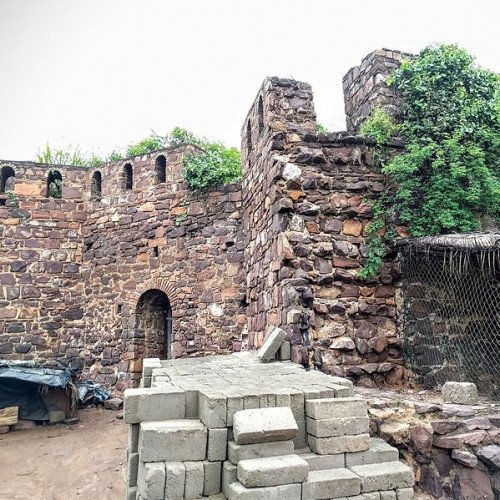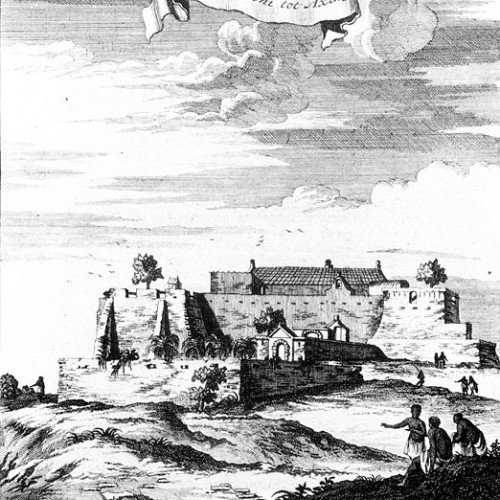Castles of "Ghana" FORT KOMENDA vs FORT SAINT ANTHONY

FORT KOMENDA
Fort Komenda was a British fort on the Gold Coast, currently preserved as a ruin. Fort Komenda was established between 1695 and 1698 at Komenda, in contemporary Ghana. The fort had a very peculiar architecture, as this four-bastioned structure was built around an earlier four-bastioned English trading post, built in 1633. Fort Komenda was within cannon-shot distance to the Dutch Fort Vredenburgh. It was abandoned in 1816, after the abolition of slave trade. The ruin of the fort was transferred to the Dutch as part of a large trade of forts between Britain and the Netherlands in 1868. When a Dutch navy ship entered the harbour of Komenda, however, the local population resisted the transfer of the fort to the Dutch. Through the use of force, Dutch rule was eventually established. Between December 1869 and January 1870, a military expedition was sent to the local capital of Kwassie-Krom. A deadly battle ensued, but the Dutch managed to emerge as victors. It was a Pyrrhic victory, however, as the ongoing problems with the local population meant that on 6 April 1872, the entire Dutch Gold Coast, was again transferred to the United Kingdom, as per the Gold Coast treaty of 1871.
Statistics for this Xoptio

FORT SAINT ANTHONY
Fort Saint Anthony (Portuguese: Forte de Santo António; Dutch: Fort Sint Anthony) was a fort built by the Portuguese in 1515 near the town of Axim, in what is now Ghana. In 1642, the Dutch captured the fort and subsequently made it part of the Dutch Gold Coast. The Dutch expanded the fort considerably before they turned it over, with the rest of their colony, to the British in 1872. The fort is now the property of the Ghanaian state and is open to the public. As the westernmost fort of the Dutch possessions, Fort Saint Anthony was the first fort encountered by Dutch traders, and the place where provisions and fresh water were taken in. Fort Saint Anthony remained an important fort in the Dutch possessions, with its commandant serving as senior commissioner (Dutch: oppercommies) in the Colonial Council in Elmina, together with the commandant of Fort Nassau at Moree, the commandant of Fort Crèvecoeur at Accra, and the commandant of the factory at Ouidah, on the Dutch Slave Coast. In contrast to many other Dutch possessions on the Gold Coast, Fort Saint Anthony was never abandoned during the 19th century, and remained occupied until 1872. Due to a lack of study of the Portuguese archives of the sixteenth century, little is known about the early years of Fort Saint Anthony and about the reason for the Portuguese to settle themselves at Axim, although a desire to control the gold trade in the area seems a logical motivation. The first evidence of Portuguese involvement near Axim is a letter from the governor of Elmina to the King of Portugal from 1503, to send construction materials to captain Diogo d'Alvarenga, who was in charge of the construction of the "House of Axem." After this house was destructed by local peoples, the Portuguese constructed a new post slightly more to the east, probably on the site on which the current Fort Saint Anthony still stands.